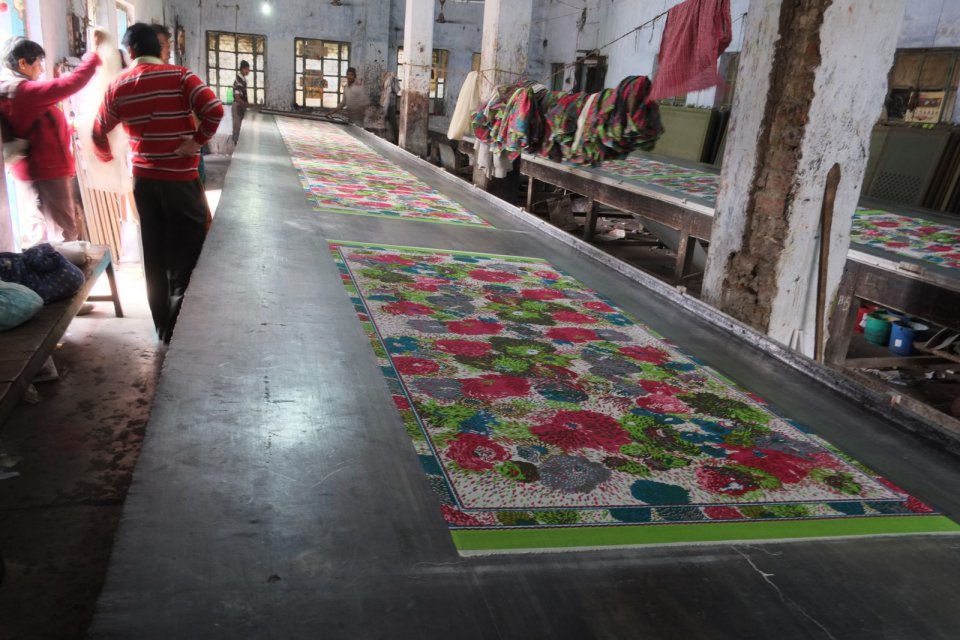20% Off your first online order!
Sign up to our newsletter for the latest offers, products and more...
There are many ways of imprinting a pattern onto fabric but probably the most common is the traditional method of screen printing. The screen itself is a fine mesh which is fitted into a wooden frame big enough to contain the whole pattern. If the pattern is a simple repeat pattern the screen might be quite small and the frame can be systematically moved over the fabric to produce the repeat. If the pattern is a non repeat pattern that covers the whole scarf then the screen needs to cover the whole scarf. In the image below the screen is half the length of the scarf and the pattern is repeated in either half.
The mesh of the screens is overlaid with a blocking stencil cut to the required pattern which stops the ink being pushed through to the fabric. If a pattern has several colours then each of these will require a seperate screen. The ink is pushed through the sreen with a long squeegee or blade as can be seen in the image below. Generally there will be one printer either side of the table to ensure the pressure on the squeegee is even.

In the area of India that we use the printing is done in very large rooms on very long tables, usually 20mts or more. The fabric is laid out flat on the table and held in place by a type of wax that is spread on the table where the edges of the fabric are. The table will have been carefully marked so that each scarf is in exactly the right place and each screen will line up exactly with the fabric. This is critical especially in multi coloured designs as if the one of the screens is even a few millimtres out this will produce a noticeable ghosting effect. This truly is a highly skilled and specialised art form.

Screen printing is a very simple and effective way of putting a pattern on fabric and is still the most cost effective. Recently though digital printing has become very popular and I am sure as the cost of machinery comes down it will only get more so. Currently machnes that can print digital images onto fabric of the size we need start at about £50,000 and go up to over £250,000!!!!! Our suppliers are attempting to sort out finance to buy one which is a huge leap of faith.
Sreen printing is only suitable for certain types of patterns. Because of the way the ink is applied through the screen each colour will be separately defined and have a defined edge to the pattern. Digital printing allows you to print a hi resolution digital image directly onto the fabric and allows colours to blend and fade. The other big advantage of digital is that you can have a huge range of colours and tones printed onto the scarf. With screen printing there are set up costs to consider, as each screen costs about £30, so a four colour print will cost £120 before even starting. With digital the file is simply uploaded to the machine, the same as you would upload a file to any other media device. This is why you can get small production runs done with digital printing.
The image below is one of our linen screen printed scarves, YS1014, and this is a three colour print on an undyed fabric. In the last couple of years we have started doing more and more bespoke work, especially in screen printed products. Because of the nature of our supply chain we are able to offer bespoke products in runs of 100 - 200 scarves, which is something the Chinese cannot do. Because of the industrial nature of the Chinese manufacturing it is not viable for them to turn their factories on for less than several thousand. One up for the little guy
Sign up to our newsletter for the latest offers, products and more...